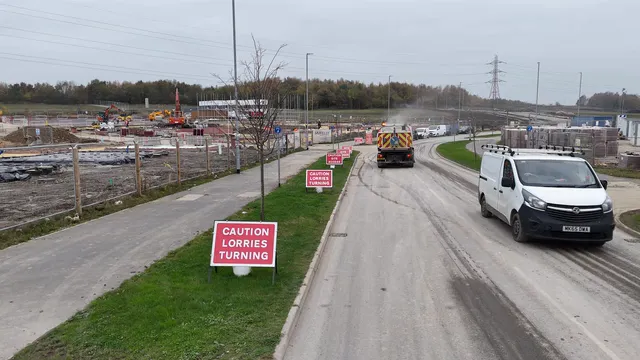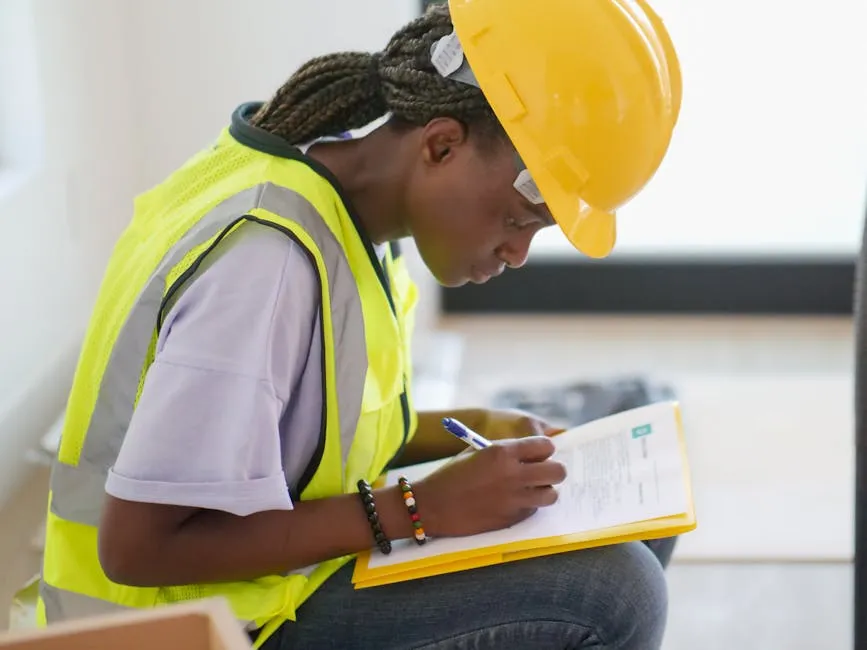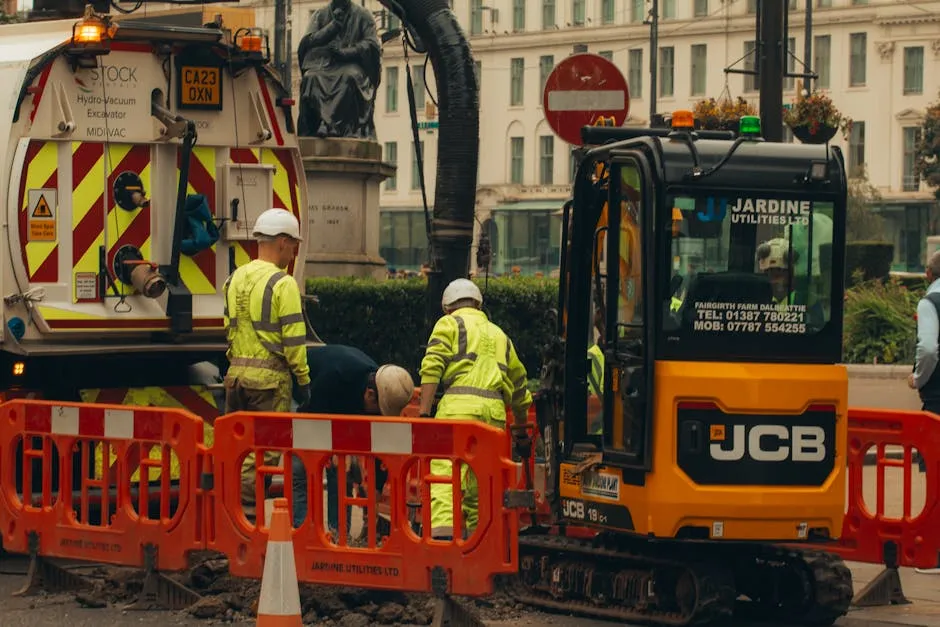Introduction
Utility surveys play a vital role in construction and infrastructure projects. They help identify the location of essential underground services. Without these surveys, digging can lead to accidents or costly damages. As construction becomes more complex, accurate utility mapping is increasingly important. It ensures safety and efficiency on site.

Summary and Overview
A utility survey assesses various underground utilities, including water, gas, electricity, and telecommunications. The process begins with desktop studies, where existing utility records are reviewed. This is followed by field investigations to confirm the presence and location of utilities.
Utility surveys are crucial for risk mitigation and project planning. They help avoid disruptions and ensure compliance with local regulations. New technologies, such as Ground Penetrating Radar (GPR) Device and electromagnetic locators, are transforming how these surveys are conducted. These innovations allow for more accurate mapping and safer construction practices.

What is a Utility Survey?
A utility survey is a detailed assessment of underground services. This includes vital utilities like water, gas, electricity, and telecommunications. The main purpose is to pinpoint their exact locations and depths before any construction begins.
Utility surveys are essential in construction and urban planning. They help prevent accidents and costly damages during excavation. Knowing where utilities lie allows contractors to work safely and efficiently.
Various industries apply utility surveys. In construction, they ensure safe digging practices. Urban planners utilize them to avoid disrupting existing services. Additionally, utility surveys play a crucial role in infrastructure development, ensuring compliance with regulations.

Importance of Utility Surveys
Conducting utility surveys before construction offers numerous benefits. First and foremost, it enhances the safety of construction workers and the public. By identifying buried utilities, the risk of hitting a gas line or electrical cable is greatly reduced.
Cost savings are another significant advantage. When utility surveys are overlooked, damages can lead to expensive repairs and project delays. These unexpected costs can quickly add up, making surveys a smart investment. You can further protect your investment with a Construction Site First Aid Kit, ensuring your team is prepared for any mishaps on site.
Moreover, utility surveys ensure legal compliance. Many regions require utility surveys to avoid disruptions to services. By adhering to these regulations, companies mitigate the risk of fines and legal disputes. Ultimately, the integration of utility surveys into the planning process contributes to safer, more efficient construction projects, protecting both workers and the public.

Understanding how to effectively utilize data can enhance your utility survey practices. Check out these best practices for using Israel Central Bureau of Statistics data visualization for more insights.
Utility Survey Methodologies
Utility surveys employ several methodologies to locate and assess underground utilities. Each method has unique advantages and limitations, making it essential to choose the right approach for your project.

Key Methodologies:
Ground Penetrating Radar (GPR)
Ground Penetrating Radar (GPR) uses electromagnetic waves to detect underground utilities. It sends short bursts of energy into the ground, which bounce back when they encounter different materials. This technology excels at locating both metallic and non-metallic pipes, including PVC and concrete.
Pros: GPR is non-invasive and can provide real-time data. It also offers detailed imaging of subsurface utilities.
Cons: GPR may struggle in highly conductive soils, such as clay, and requires skilled operators to interpret results accurately.

Electromagnetic Locators
Electromagnetic locators detect underground utilities by sensing their electromagnetic signals. There are several techniques within this method:
- Direct Connection: This method applies current directly to exposed metal parts for accurate tracing.
- Ring Clamp: A clamp induces a signal onto the line, suitable for non-disruptive tracing.
- Induction: This approach sends a signal without direct contact, but results can be less reliable in areas with many metallic lines.
Pros: Electromagnetic methods provide quick and effective results, especially for metallic utilities.
Cons: They may not work well for non-metallic pipes, and accuracy can diminish in cluttered environments.

Acoustic Methods
Acoustic methods utilize sound waves to locate utilities buried underground. By measuring the time it takes for sound waves to bounce back, operators can determine the depth and location of utilities.
Pros: This technique is particularly effective in granular soils and can be used where other methods fail.
Cons: Acoustic methods may be less effective in densely packed or rocky environments, where sound transmission can be inconsistent.

Vacuum Excavation
Vacuum excavation involves using high-powered vacuums to safely expose underground utilities. This method loosens soil around utilities using air or water, then vacuums the debris away.
Pros: Vacuum excavation is non-intrusive and greatly reduces the risk of damaging utilities during excavation.
Cons: It can be more costly than other methods and may require specialized equipment and trained personnel. To make this process smoother, consider investing in a Portable Air Compressor to assist with your excavation needs!

Each of these methodologies plays a critical role in utility surveys. By understanding their strengths and weaknesses, you can choose the most suitable method for your project, ensuring safety and compliance while minimizing disruptions.
Industry Applications of Utility Surveys
Utility surveys are indispensable across various sectors. Construction, urban planning, and infrastructure development rely heavily on these assessments. Each industry benefits uniquely from the insights gained through utility surveys.
In construction, accurate mapping of utilities prevents accidents. For instance, during the construction of a new shopping center, a utility survey revealed buried power lines. This early detection avoided potential hazards and costly delays. Similarly, urban planners utilize utility surveys to design roads or public spaces effectively. They can avoid disrupting existing services, ensuring smoother project execution.
Infrastructure development projects also gain significant advantages. A notable example is the expansion of a city’s transit system. Utility surveys identified water and gas lines, allowing engineers to plan rerouting strategies. This proactive approach minimized disruption to essential services, keeping the project on schedule.

Looking ahead, the demand for utility surveys is likely to rise. As cities grow and technology advances, more industries will recognize their importance. New methodologies are emerging, making utility surveys even more efficient and reliable. You might want to consider a Professional Surveying Equipment to stay ahead in the game!
In summary, utility surveys are vital in construction, urban planning, and infrastructure projects. They not only enhance safety and compliance but also support effective planning and execution.

Best Practices for Conducting Utility Surveys
Choosing a reliable utility survey provider is crucial. Start by researching their experience and expertise. Look for companies that have successfully completed projects similar to yours. Client testimonials and case studies can provide valuable insights.
Utilizing advanced technologies is essential for accurate results. Ground Penetrating Radar (GPR) and electromagnetic locators are effective tools. A provider using these technologies can deliver precise data on underground utilities. This accuracy is vital for avoiding costly mistakes during construction.

Understanding survey deliverables is another key aspect. Ensure the provider offers comprehensive reports in accessible formats. High-resolution maps, 3D models, and clear documentation enhance usability. This clarity is vital for integrating the survey data into your overall project planning.
Lastly, maintain open communication with your survey provider. Discuss project requirements and timelines to ensure all expectations are met. By following these best practices, you can ensure a successful utility survey that meets your needs and supports your project goals. And don’t forget to equip your team with Heavy-Duty Work Gloves for added safety!

Key Points:
Criteria for Selecting a Provider
Choosing the right utility survey provider is crucial. Look for experience, industry knowledge, and credentials. A provider with a strong track record can manage your project effectively. Client testimonials and case studies offer valuable insights into their reliability. Ensure they use up-to-date technology for accurate results. Their ability to deliver clear, comprehensive reports is also essential.

Importance of Technology in Accuracy
Technology plays a vital role in utility surveys. Advanced tools like Ground Penetrating Radar (GPR) and electromagnetic locators enhance accuracy. These technologies help identify underground utilities without invasive digging. They provide real-time data, ensuring precise mapping of services. As construction projects become more complex, relying on innovative solutions is critical for safety.

Understanding Deliverables and Reports
Understanding the deliverables from your utility survey provider is important. Expect detailed reports that include maps, diagrams, and photographs. These documents should clearly outline the location and type of utilities found. Ensure the format is user-friendly, such as CAD or PDF. This clarity will aid in integrating the survey data into your project planning effectively. For keeping track of important notes, consider using a Waterproof Notebook!
Conclusion
Utility surveys are essential in modern construction and infrastructure projects. They help identify underground utilities, mitigating risks and ensuring project success. By prioritizing utility surveys, you protect your team and your investment. Don’t overlook this crucial step; contact a utility survey provider today for expert consultation. And while you’re at it, consider reading a Construction-Themed Coffee Table Book to inspire your next project!
FAQs
What is the purpose of a utility survey?
Utility surveys aim to locate underground utilities and assess their condition before construction. They help prevent accidental damage, ensuring safety and compliance with legal requirements. By identifying potential hazards, these surveys support effective project planning.
How can utility surveys save costs in construction?
Utility surveys can save costs by identifying utilities early, preventing damage during excavation. Avoiding disruptions reduces project delays and costly repairs. This proactive approach protects your budget and timeline, making utility surveys a wise investment.
What technologies are used in utility surveys?
Common technologies include: – Ground Penetrating Radar (GPR): Uses radar pulses to detect underground materials. – Electromagnetic Locators: Identify metallic utilities by sensing their electromagnetic fields. – Acoustic Methods: Utilize sound waves to locate buried utilities. – Vacuum Excavation: Safely exposes utilities without causing damage.
Are utility surveys required by law?
Yes, many regions have regulations requiring utility surveys before construction. These laws aim to protect public safety and prevent damage to essential services. Compliance with local regulations is crucial for avoiding fines and legal issues.
How long does a utility survey typically take?
The duration of a utility survey varies based on project size and complexity. Generally, surveys can take from a few hours to several days. Factors like site conditions and the number of utilities to assess will influence the timeframe.
Please let us know what you think about our content by leaving a comment down below!
Thank you for reading till here 🙂
All images from Pexels




